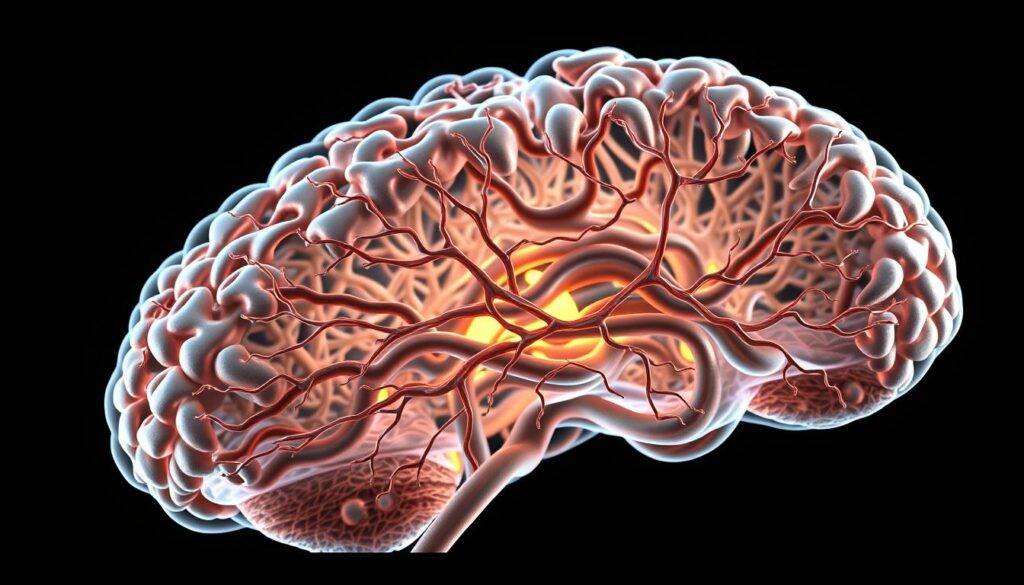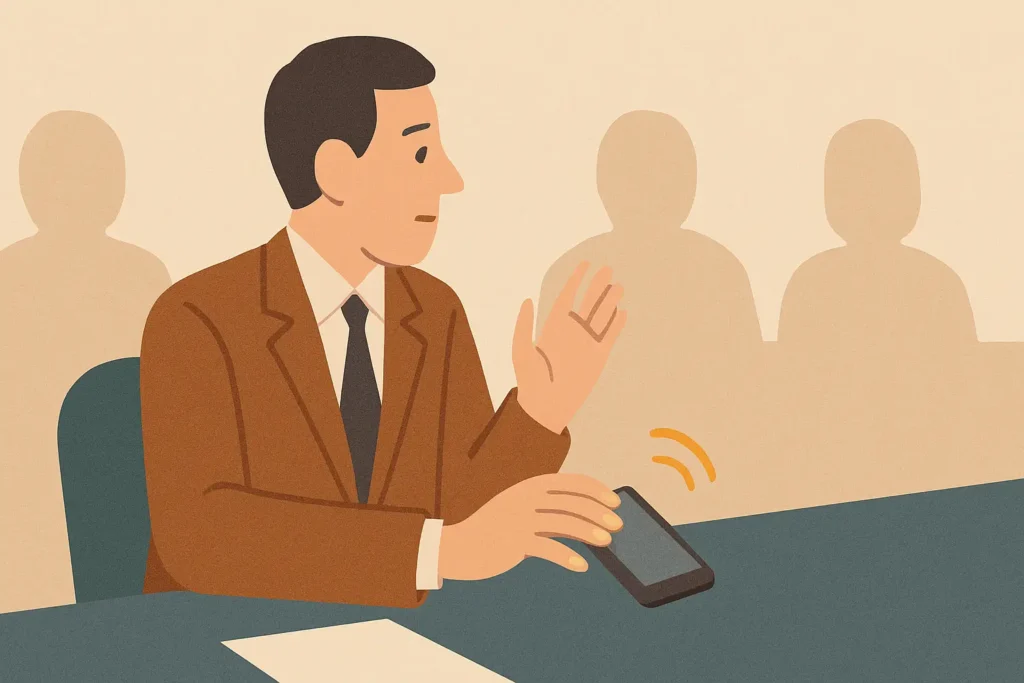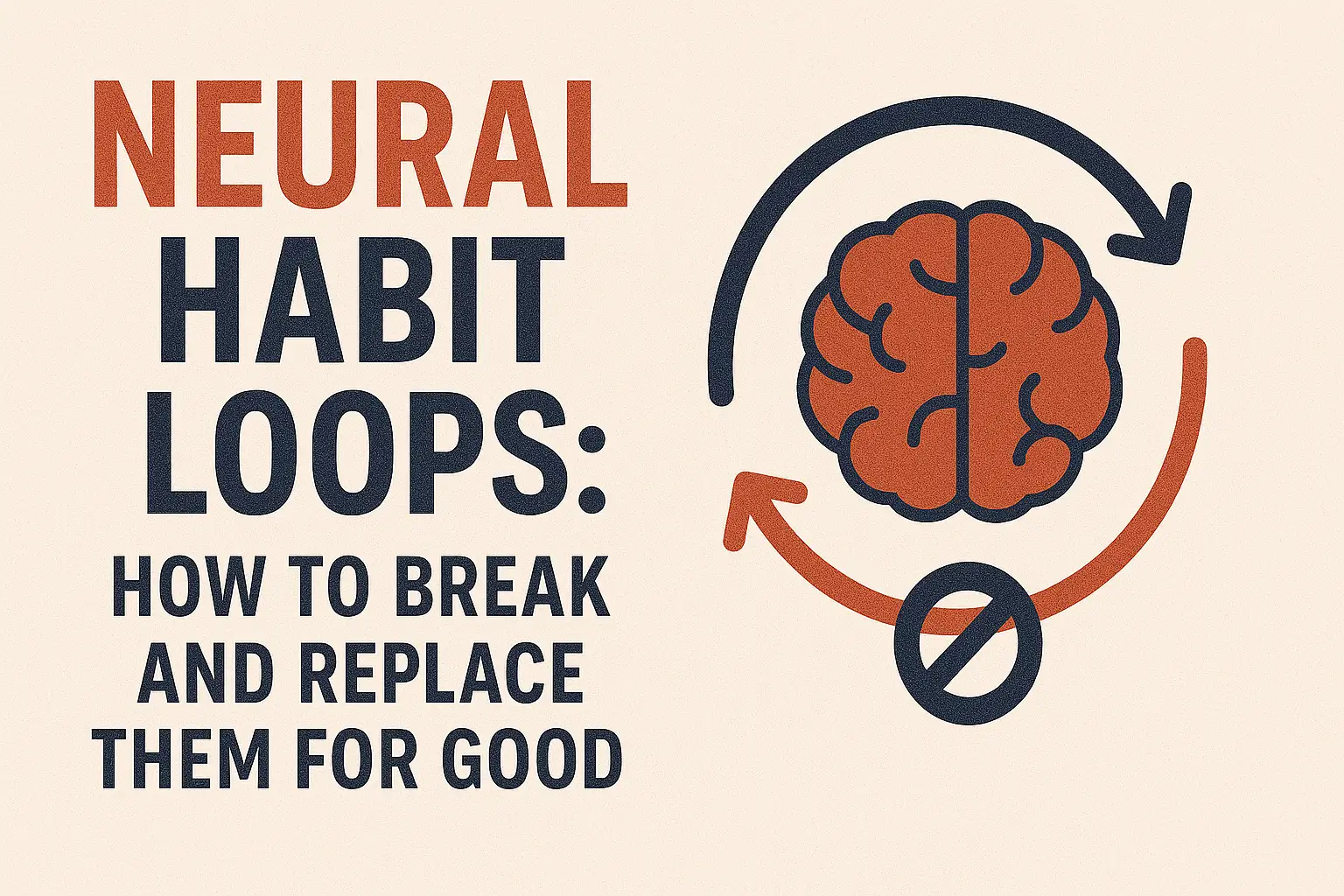Sarah used to burn her toast every morning. The New York graphic designer would stumble into her kitchen, half-awake, and repeat the same routine: press start on her coffee maker, pop bread in the toaster, then scroll social media until smoke filled the air. After three charred breakfasts, her brain finally automated the process. Now she instinctively removes the toast when the coffee finishes brewing – no conscious effort required.
This automatic pattern illustrates how our minds create efficiency. Research shows the basal ganglia, a brain region governing routine, encodes repeated behaviors into streamlined sequences. Helpful routines like Sarah’s coffee ritual conserve mental energy. But when similar patterns drive stress-eating at lunch or late-night doomscrolling, they become barriers to growth.
Understanding these mental shortcuts empowers change. Every habit follows a three-part cycle: a trigger (morning alarm), an action (coffee brewing), and a reward (caffeine boost). By recognizing these components, you can reshape unhelpful cycles while preserving beneficial ones.
Key Takeaways
- Your brain automates repeated actions to save energy through biological efficiency systems
- Daily routines exist on a spectrum from productivity-boosting to stress-inducing
- Triggers like specific times or locations kickstart automatic behaviors
- Small adjustments to existing patterns often work better than complete overhauls
- Conscious awareness is the first step toward transforming counterproductive cycles
Understanding Habit Loops and Brain Mechanics
Imagine a college student who grabs chips while studying each night. Without realizing it, their brain links textbook opening (trigger) with snack consumption (action) and temporary focus boost (reward). This cycle reveals how neurological wiring shapes daily patterns.

The Role of the Basal Ganglia in Habit Formation
Deep within the brain, the basal ganglia acts as a pattern-recognition engine. MIT studies show this region collaborates with corticostriatal circuits to convert deliberate actions into automatic behaviors. When you repeat a task – like brewing afternoon tea – these circuits strengthen, requiring less conscious effort over time.
Rewards play a critical role. Dopamine releases during pleasurable outcomes cement connections between:
- Environmental cues (e.g., 3 PM sunlight)
- Established routines (tea preparation)
- Satisfaction signals (relaxation feeling)
How Automatic Behaviors Shape Our Daily Routines
Neuroscientists use reward devaluation experiments to study ingrained patterns. In one trial, participants continued pressing levers for treats even after becoming full – demonstrating how behaviors outlast their original purpose. This explains why commuters might automatically take old routes to workplaces they no longer visit.
| Conscious Choice | Automatic Behavior | Brain Region Active |
|---|---|---|
| Learning guitar chords | Playing memorized songs | Prefrontal cortex |
| Planning gym sessions | Driving to fitness center | Basal ganglia |
| Calculating tips | Typing phone passcode | Corticostriatal circuits |
Understanding these mechanisms helps identify which routines serve your goals and which operate on autopilot. Small changes – like placing fruit where chips once sat – can reroute entrenched patterns toward better outcomes.
Recognizing Habit Cues and Triggers in Daily Life
Your phone buzzes during a work meeting. Without thinking, your hand reaches for it – a textbook example of how triggers spark automatic behaviors. These cues act like invisible puppet strings, pulling us into routines we often don’t consciously choose.

Identifying Emotional and Environmental Triggers
Triggers fall into two categories: external and internal. A 2022 UCLA study found environmental cues – like walking past a bakery – activate ingrained patterns faster than conscious decisions. One participant reported buying doughnuts daily because the shop’s red awning reminded them of childhood treats.
Emotional states work similarly. Stress might trigger nail-biting, while boredom could spark endless scrolling. As psychologist Dr. Lila Torres notes: “Our brains create shortcuts between feelings and actions – like hitting autopilot during turbulence.”
Everyday Examples from Routines and Social Settings
Consider these common scenarios:
- Time-based: 3 PM energy slump → coffee run
- Location-driven: Entering the kitchen → snack craving
- Social: Friends ordering dessert → joining despite being full
Your brain links these cues to rewards through repeated exposure. The key to change? Interrupt the pattern before the automatic response kicks in. Track your triggers for three days – you might discover your “productive” morning email check actually starts with hearing your coffee maker gurgle.
Breaking Neural Habit Loops: Techniques to Transform Behavior
Picture this: You’re halfway through a work report when your hand drifts toward a bag of chips. Before you realize it, crumbs dot your keyboard. This common scenario reveals how automatic behaviors hijack decision-making. The good news? Science-backed methods can help you regain control.

Mindfulness Strategies for Interrupting Negative Patterns
Mindfulness acts like a circuit breaker for unhelpful routines. A 2023 Harvard study found that practicing a 10-second breathing exercise when cravings strike reduces automatic responses by 37%. Try this: When a familiar trigger appears – like reaching for your phone – pause and name three things you see around you.
This technique creates space between cue and action. As psychologist Dr. Elena Martinez explains: “Conscious awareness weakens the brain’s autopilot pathways. It’s like discovering a detour on your usual commute.”
Replacing Unhelpful Routines with Positive Actions
Neuroplasticity research shows replacing old patterns works better than simply resisting them. If afternoon snacks derail your focus:
| Old Pattern | Replacement Strategy | Brain Benefit |
|---|---|---|
| Mindless scrolling | 5-minute stretching | Boosts dopamine |
| Stress-eating | Herbal tea ritual | Calms amygdala |
| Late-night screen time | Gratitude journaling | Enhances REM sleep |
Adjust your environment to support new habits. Move snacks to hard-to-reach cabinets. Charge devices outside bedrooms. These physical changes make old patterns harder to execute while easing better choices.
Remember: Lasting change comes through consistent practice, not perfection. Each mindful interruption strengthens your brain’s ability to choose responses aligned with your goals.
Harnessing Habit Loops for Personal Growth
Your morning jog wasn’t always automatic – it began as a conscious choice that reshaped your brain’s pathways. This transformative power stems from neuroplasticity, your mind’s ability to rewire itself through repeated actions. Research from University College London reveals it takes 18-254 days to cement new habits, depending on complexity and motivation.
Leveraging Neuroplasticity to Create New Habits
James Clear’s Atomic Habits principle – “Every behavior has a surface craving and a deeper underlying motive” – explains why lasting change requires aligning rewards with core values. Replace late-night snacking with herbal tea by pairing the routine (brewing) with a meaningful payoff (better sleep).
Three science-backed strategies accelerate this process:
- Stacking: Attach desired actions to existing triggers (after brushing teeth → 2-minute meditation)
- Micro-rewards: Celebrate small wins with non-food incentives (5-minute walk after completing a task)
- Environment design: Make better choices easier (keep water bottles at eye level in the fridge)
Neuroscientists confirm that consistent new habits strengthen dendritic spines – neural bridges that turn effort into automaticity. As these connections solidify through repetition, what once required willpower becomes second nature. Start today: swap one automatic response with intentional action, and watch your brain build better pathways.
Integrating New Habits: Environment, Time, and Social Influences
Your surroundings and social circles silently shape your daily patterns. Research shows 43% of repeated actions occur in consistent contexts – a phenomenon psychologists call “context-dependent memory.” By aligning your environment and schedule with your goals, you create natural pathways for lasting change.
Using Time-Based and Location Cues Effectively
Your brain thrives on predictability. A 2023 UC Davis study found pairing specific locations with new habits increases success rates by 68%. Example: Always stretch at your living room rug after turning off the morning alarm. Over time, the rug becomes a visual cue triggering automatic movement.
Three science-backed strategies:
- Anchor desired behaviors to fixed times (e.g., “7 PM = 15-minute walk”)
- Designate zones for specific actions (kitchen table for meal planning)
- Use transition moments (post-shower, pre-commute) as natural triggers
Building Supportive Networks to Reinforce Change
Social connections act as invisible scaffolding for habits. Stanford researchers discovered people with one accountability partner achieve 76% higher adherence to new routines. As behavioral scientist Dr. Rachel Wu notes: “Our social ecosystems either amplify or erode personal growth efforts.”
Practical steps to leverage relationships:
- Join communities aligned with your goals (fitness classes, book clubs)
- Schedule check-ins with friends pursuing similar changes
- Celebrate milestones using shared rewards (group outings vs. solo treats)
To transform your daily patterns, assess both physical spaces and human connections. Reduce stress by removing temptation hotspots while cultivating supportive relationships. Remember: Lasting change grows where intentional design meets communal reinforcement.
Conclusion
Your daily patterns reveal your brain’s remarkable efficiency – automating repeated actions to conserve mental energy. By understanding the cue-action-reward cycle, you hold the key to reshaping routines that no longer serve your goals. Scientific research confirms that recognizing triggers and mindfully adjusting responses can rewire entrenched pathways over time.
Practical strategies like environmental redesign and targeted behavior swaps create lasting change. Start small: replace one automatic response this week. Track how specific locations or emotional states influence your actions, then experiment with intentional adjustments.
Progress builds through consistent practice, not overnight perfection. Surround yourself with supportive networks and celebrate incremental wins. Every conscious choice strengthens your ability to design days aligned with your aspirations.
You now possess both the science and tools to transform counterproductive cycles. What habit will you rewire first? Your brain’s adaptability ensures that today’s mindful efforts become tomorrow’s effortless routines.
FAQ
Which brain region controls repetitive daily behaviors?
The basal ganglia manages automatic actions like brushing teeth or driving familiar routes. This deep-brain structure converts repeated behaviors into efficient routines, freeing mental energy for complex tasks.
How do Starbucks locations trigger automatic behaviors?
Environmental cues like coffee shop logos act as triggers, activating ingrained patterns. Seeing a Starbucks sign often prompts ordering rituals without conscious thought – a classic example of location-based habit activation.
What’s the fastest way to interrupt stress-eating patterns?
Practice the STOP technique: When craving hits, pause for 17 seconds while hydrating. This creates space to choose fruit instead of candy, gradually rewiring the brain’s response to emotional triggers.
Can morning routines leverage neuroplasticity effectively?
Absolutely. Consistent 7 AM meditation paired with green tea creates powerful neural pathways. The combination of time cues and sensory rewards helps cement new behaviors within 3-8 weeks through dopamine-driven reinforcement.
Why do gym buddies improve workout consistency?
Social accountability triples habit success rates according to American Psychological Association studies. Workout partners provide positive reinforcement and subconscious cues that activate the brain’s reward centers during exercise routines.
How long to replace phone-checking with reading?
Place books in former phone locations (nightstands/coffee tables). Most users report 23-41 day adjustment periods. The visual cue replacement method helps the basal ganglia reconfigure automatic reach-and-grab responses.




























































